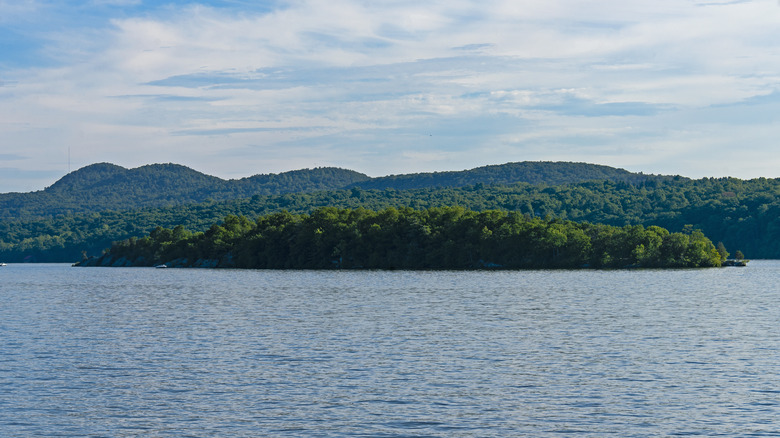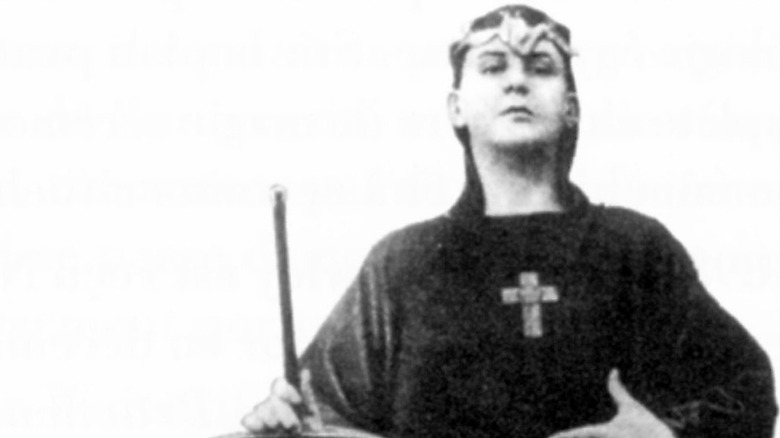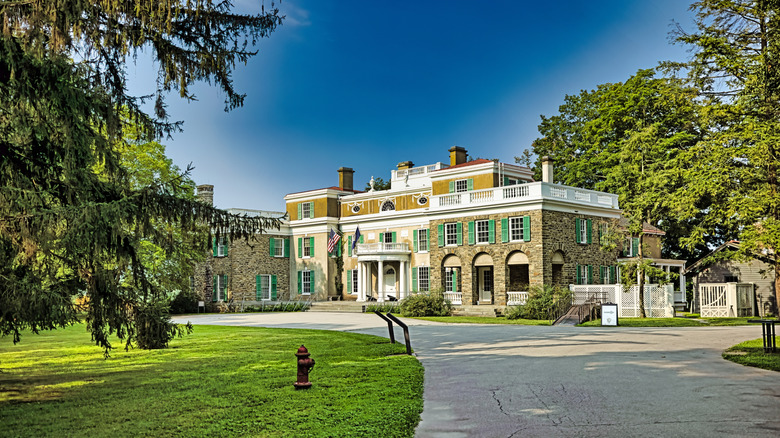Camp On A Secret Scenic Island In New York's Hudson River With A Dark, Mysterious Past
On the beautiful Hudson River 100 miles north of Manhattan lies a small, uninhabited island with a fascinating history. Accessible only by boat and now part of the state park system, Esopus Island has primitive campsites, a small beach, and an ancient stone megalith left by Native Americans. Over the years, it has seen its share of history, but the most intriguing event connected to this rocky, partially forested sliver of land happened in the summer of 1918 when Aleister Crowley, a notorious British mystic, practitioner of the occult, and all-around iconoclast camped here for a biblical 40 days and 40 nights.
At 500 yards long and just 40 yards wide, the island is tiny and bereft of activities or amenities — so no bathrooms or cabins. You have to bring your own fun and gear. Take a dip, fish, or read a book, and leave no trace that you've been there. The island is near the tiny town of Esopus on the west bank of the Hudson and Hyde Park on the east bank. You can paddle an hour in your own kayak from the marina of Norrie Point, which has a floating dock so kayakers can easily dry launch; the Poughkeepsie Yacht Club; or from Esopus Meadows Preserve. You can also join a Hudson River Expeditions tour. When in the vicinity, don't miss the nearby picturesque Esopus Meadows Lighthouse. Also check out the best campsites near New York City and glamping with a view of the Manhattan skyline.
About Aleister Crowley and his time on the island
Aleister Crowley lived an adventurous life, traveling widely, climbing mountains, writing books, starting a religion, and even possibly working as a spy during World War I. Born into wealth in 1875 and educated at Cambridge, Crowley died in poverty in 1947 after flagrant spending and trouble with the law. As a young man, he joined a secret occult organization called the Hermetic Order of the Golden Dawn, whose members practiced mysticism and ceremonial magic rituals. He created his own tarot deck and founded a religion called Thelema, out of which came the principle: "Do what thou wilt shall be the whole of the law."
During Crowley's time on Esopus Island, he graffitied that on its rocks in red paint, sat in the lotus position for hours, translated an ancient Chinese religious text, and claimed to have encountered past selves, some of whom included Martin Luther and Pope Alexander VI. These visions might have resulted from the drugs that visitors brought him along with food, as he spent his money on paint and climbing gear.
Years later, he was called "the wickedest man in the world" and expelled from Italy for debauchery. He had few followers when he died but later became a cult figure as the subject of books and films and immortalized in pop culture: The Beatles included Crowley on the cover of their "Sgt. Pepper's Lonely Hearts Club Band" album, and Ozzy Osbourne wrote a song about him.
What to do nearby
Esopus Island is technically part of Hyde Park, a city that has three national parks and America's first presidential library — sites related to Franklin and Eleanor Roosevelt and the Vanderbilts.
Franklin D. Roosevelt was elected U.S. president in 1932 and served four terms, the most of any president. His presidency spanned the Great Depression and World War II. Over that time, FDR (as he was known) developed New Deal programs to help Americans recover financially, created Social Security, and was a driving force behind the formation of the United Nations. Visitors can learn about his life and accomplishments at the Franklin D. Roosevelt Presidential Library and Museum. His wife, Eleanor Roosevelt, had a separate 34-room home nearby called Val-Kill, which is now the Eleanor Roosevelt National Historic Site. Here, visitors can learn about her work for women's rights and civil rights, her active participation in the affairs of the White House, and her service as chair of the United Nations Human Rights Commission. The couple is buried in the FDR site's Rose Garden.
The third national park site in Hyde Park is the Vanderbilt Mansion. Designed by the renowned architectural firm McKim, Mead & White, this opulent 54-room mansion is adorned with marble and tapestries and once had a staff of 18. Wander its formal gardens and enjoy sweeping Hudson River views. Beyond Hyde Park and Esopus Island, you can explore a car-free New York island that's a national seashore.


